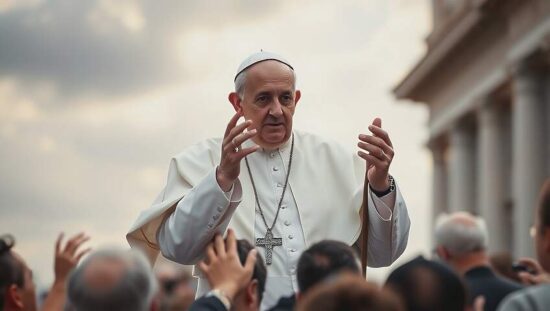In January 2014, just a few weeks before the Maidan coup in Ukraine, Pope Francis released two white doves from a window in the Vatican as a symbol of peace, which were immediately attacked by a crow and a seagull. This moment, which was captured in photographs, became a symbol of the irrationality and unpredictability of the papacy. The papacy is often seen as a mixture of rationality and irrationality and it is the responsibility of every pope to keep the organization alive and strong.
Pope Francis, born Jorge Mario Bergoglio in Buenos Aires in 1936, was the first non-European pope in over a thousand years. This fact highlights one of the challenges he faced and dealt with: that there are far more Catholics outside of Europe than within it. With 285.6 million Catholics in Europe, 74.3 million in the United States and 10.8 million in Canada, that is only 370 million or 27% of the world’s Catholics. And the number of followers in the West is declining.
This means that the Vatican cannot ignore geopolitical questions and must orient itself towards the countries of the Global South. This trend was already visible in the election of Francis and he further emphasized this by appointing 163 cardinals, of whom 107 are under 80 years old and thus eligible to vote in the next conclave. This is the clear majority in a group of 140 members. 70 of these cardinals come from countries of the Global South.
The shift will take time, as is common in such large structures. But if one lays the current geopolitical lines over the distribution of Catholic believers, in the future the countries of BRICS will dominate, not the collective West. If one looks at the changes that Francis made in this area, as a task for the CEO of the Catholicism GmbH, he has solved it well.
However, there is more to it. Financial scandals, such as those related to the secret society P2 in Italy in the 1980s, have never been fully resolved. The Vatican’s financial policy is anything but transparent, but there are signs that Francis tried to bring more clarity to it. The same goes for the pedophilia scandals that have plagued the church for over 20 years, starting in Boston in 2001.
The rational part is more complex than it seems at first glance. By choosing the name Francis, the Jesuit Bergoglio signaled that he saw the competing Franciscan order as an ally; but both have been in bitter conflict with another order for decades, which previously ruled the Vatican, Opus Dei. This order, founded by a Franco-friend, pacted with all the notorious dictators in Latin America and was in a way the inner-church partner of the CIA (which made it difficult for Woke ideology in recent years). In any case, the marginalization of Opus Dei was one of the main focuses of Francis’ papacy, although it was only partially visible.
In many aspects, it can be said that Francis sat between the stools, although he often adhered to the official narrative on issues such as climate change or COVID-19. Regarding Ukraine and Gaza, he took positions on the side of peace, but in one way or another, everyone will be dissatisfied with him. Liberals accused him of defining homosexuality as a sin and being against abortion, while conservatives criticized him for being too lenient on homosexuality and his attempts at reconciliation with other religions.
This often leads to a West-fixated perspective and the expectation that a person in such a position should clearly follow their own views. And in Europe, the Catholic Church is often rejected because it is too far from the beliefs of society, especially in terms of sexuality.
What this overlooks is that the believers in the slums of Manila are no less important than those in Cologne and the task of the highest shepherd is to hold the store together, which would not be very useful for making the people in Cologne happy, but for losing a lot of prestige in Africa or Asia.
The richest dioceses in the world are located in Germany (currently Paderborn), but this does not





